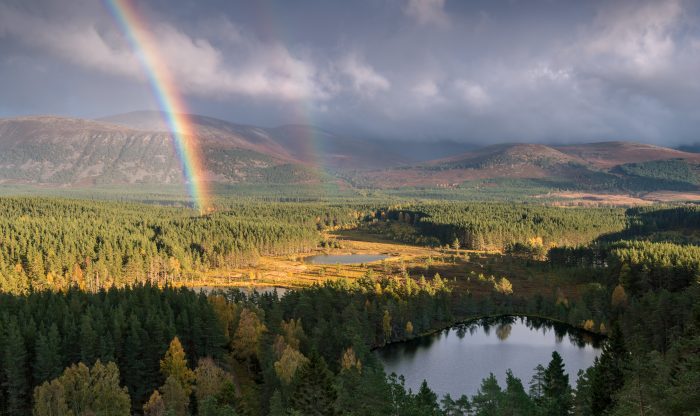Cairngorms Forests: A rich heritage of native timber production
4th November 2019

By Will Boyd-Wallis, Head of Land Management for the Cairngorms National Park Authority.
The Cairngorms National Park contains some of the finest, most extensive and best connected native woodlands in Scotland. There is a long heritage of forest management across the National Park and it continues to be the perfect test-bed for combining commercial forestry with good environmental management.
The alluvial soils of the Cairngorms are perfect for growing a wide range of species, not least Scots Pine and Birch which have been recorded growing above 1000 m above sea level. This means we have enormous potential for creating more pine and birch woodlands across the National Park. The swathes of trees that already cloak the lower slopes of our mountains are an inspiring reminder of the potential for more forest across the whole of Scotland.
Over the last two decades a number of estates in the Park have significantly reduced deer pressure resulting in some spectacular woodland regeneration without any need for fencing. This has saved some of our most celebrated pinewoods from serious decline and is to be applauded. Alongside this, many grouse-moor managers have removed deer, limited sheep grazing and controlled mountain hare, with woodland regeneration arising in unexpected places on the edge of the moors.
Stocking levels of natural regeneration can be very high (>5000 trees/ha); in some locations if thinned appropriately this creates potential for the production of a unique, high quality timber resource. A number of forest managers across the Park are making good use of regeneration and continuous cover in existing forests as a means of combining good environmental management with commercial timber production.
Earlier this year the Cairngorms National Park Authority (CNPA) launched a new Forest Strategy for the National Park. A key objective of the strategy is to promote the creation of new woodlands whilst demonstrating the potential for integration of different land uses across the Park. The strategy seeks in its 100 year vision to see a ‘forest culture’ develop throughout the Park’s communities. We want to see more people employed in forestry and benefiting from all the environmental, social and economic opportunities that more healthy and extensive forests provide.
The Forest Strategy stresses the need to produce 5,000 hectares of new forest over the next five years and provides guidance on how and where this could be done. The emphasis of the strategy is on native species because as a National Park we always want to produce the best quality habitat for wildlife alongside other forest management objectives. Non-native species are by no means ruled out for carefully planned productive forestry but ideally we believe we can demonstrate the untapped commercial potential for more native timber use.
The reasons for more woodland creation in the Park are many, but the Scottish Government’s declaration of a climate emergency has increased our resolve to ensure the land is put to best use for future generations. We cannot go on forever importing so much timber when we have the potential to produce so much more of our own. We cannot go on increasing the height of our flood defences when our hillsides could support a much more diverse and water absorbent wooded landscape. The need for sustainable locally sourced resources including timber has never been greater than now and is only going to increase in the future.
With this urgency in mind there are now added incentives for woodland creation in the National Park. Scottish Forestry Grant Scheme applications within the target areas (shown in the Forest Strategy) may receive an additional 12.5% payment. On top of that… CNPA, with the help of Scottish Forestry, Woodland Trust Scotland and Scottish Natural Heritage have launched a ‘Woodland Challenge Fund’ to help with the costs of putting together grant applications. These incentives are predominantly aimed at increasing native forests which we believe, if managed well, will become increasingly marketable in the future.
The Woodland Challenge Fund is currently being run as a pilot. We are very keen to hear from any landowners in the National Park considering woodland creation who may appreciate the help (up to £3000) this fund can provide. For more information please contact our woodland advisor David Hetherington: [email protected] 01479 8705516.